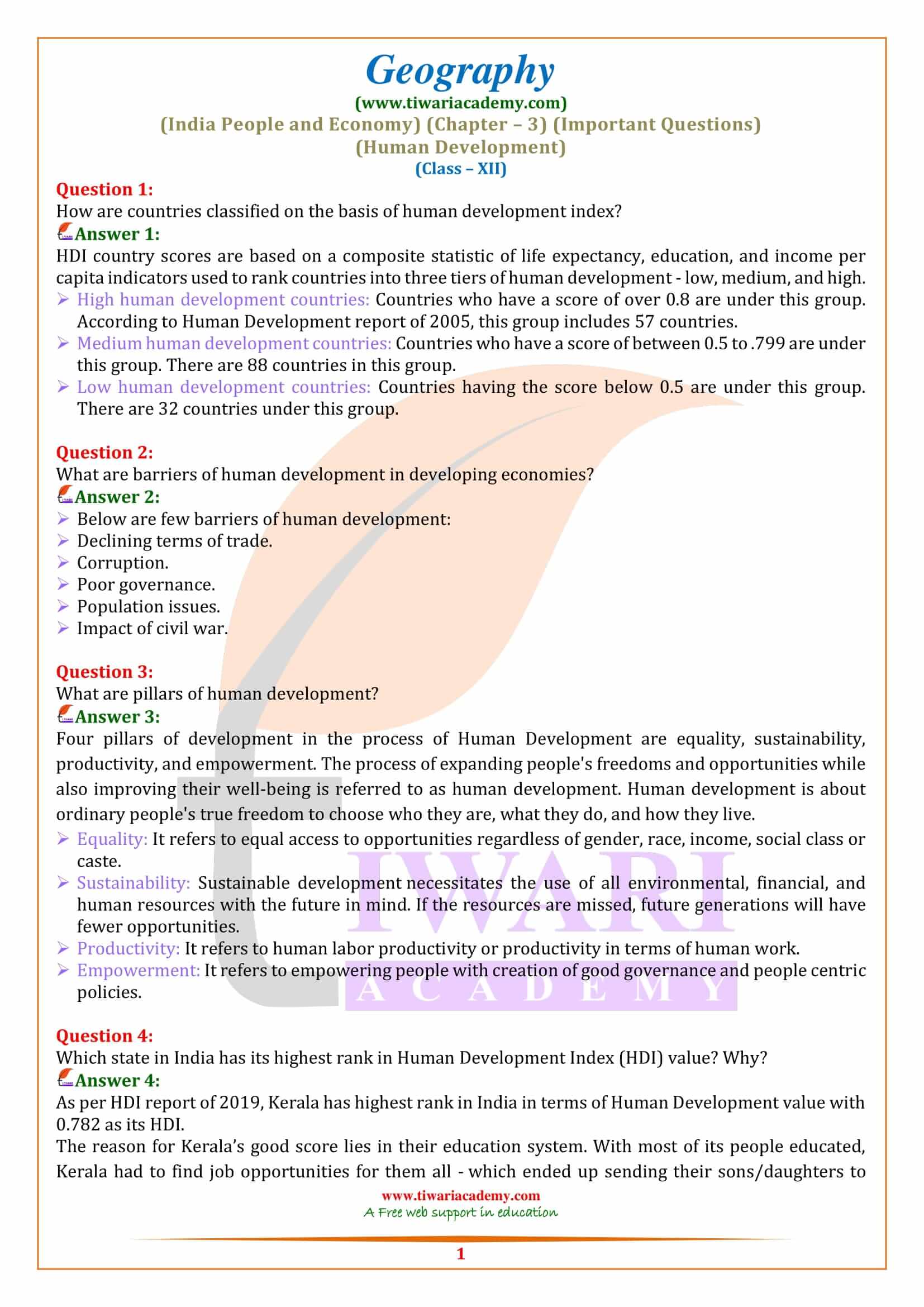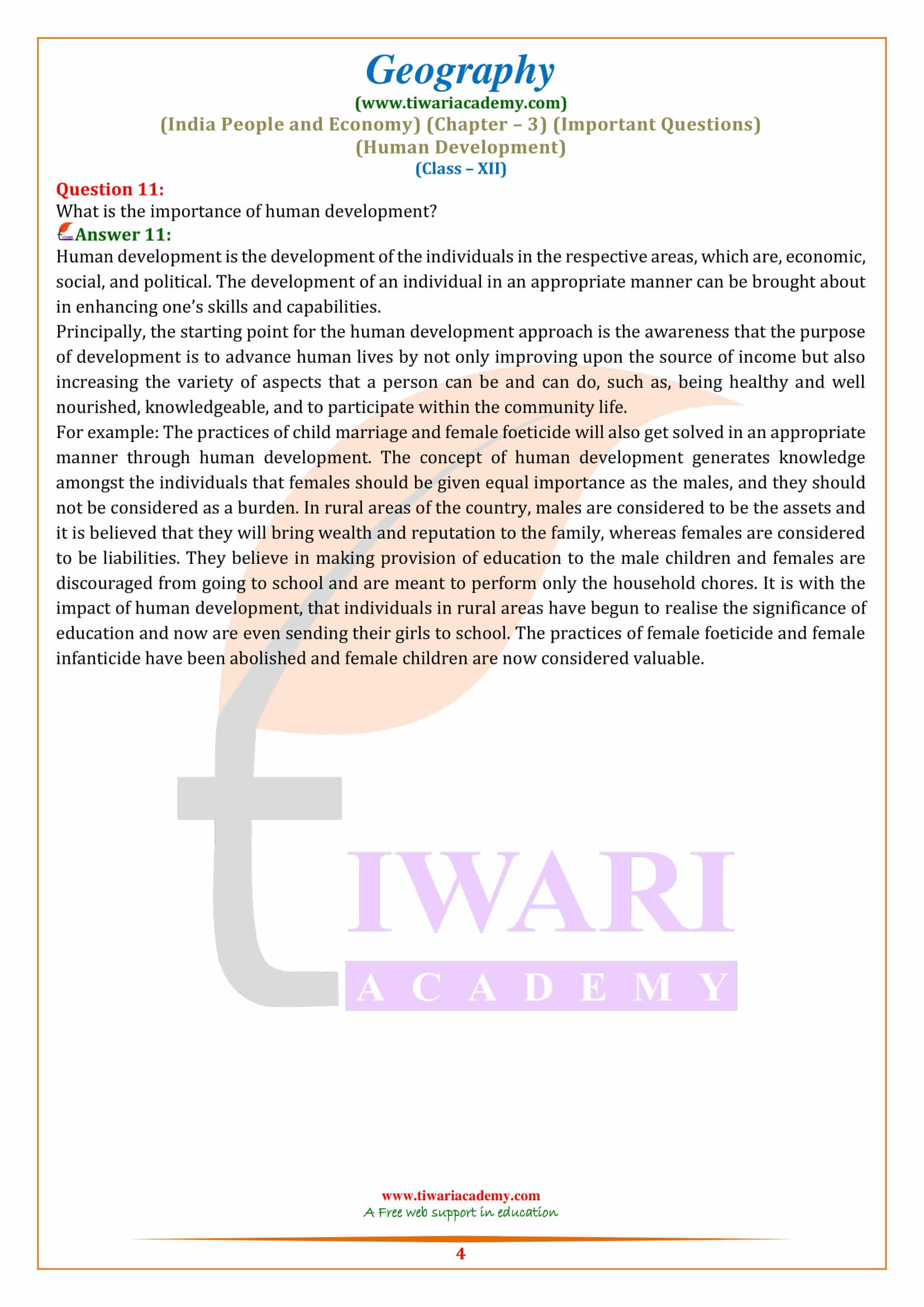Class 12 Geography Part 2 Chapter 3 Important Questions of Human Development and intext questions including short and long answer type questions. All the extra question answers of 12th Geography chapter 3 are given here taken from part 2 book India People and Economy.
Class 12 Geography Chapter 3 Important Questions
Class 12 Geography Chapter 3 Important Extra Question Answers
How are countries classified on the basis of human development index?
HDI country scores are based on a composite statistic of life expectancy, education, and income per capita indicators used to rank countries into three tiers of human development – low, medium, and high.
- High human development countries: Countries who have a score of over 0.8 are under this group. According to Human Development report of 2005, this group includes 57 countries.
- Medium human development countries: Countries who have a score of between 0.5 to .799 are under this group. There are 88 countries in this group.
- Low human development countries: Countries having the score below 0.5 are under this group. There are 32 countries under this group.
What are barriers of human development in developing economies?
Below are few barriers of human development:
- Declining terms of trade.
- Corruption.
- Poor governance.
- Population issues.
- Impact of civil war.
Which state in India has its highest rank in Human Development Index (HDI) value? Why?
As per HDI report of 2019, Kerala has highest rank in India in terms of Human Development value with 0.782 as its HDI.
The reason for Kerala’s good score lies in their education system. With most of its people educated, Kerala had to find job opportunities for them all – which ended up sending their sons/daughters to outside Kerala and overseas. This overseas migration in Kerala started as early as early 1950s which resulted in huge inflow of foreign remittance that helped them to build better public transportation system, better infrastructure, better medical facilities, better education system, better governance, better living conditions and overall a better life that we see today.
Secondly, Kerala is the first state to implement land reform bills and education reform bills. Last but not least, it has flourished economy spurred by exports and tourism and well supported by availability of infrastructure like ports and railway networks with smart and enterprising population.
Is it possible that development and underdevelopment coexist in a state?
The development and underdevelopment coexist in a state. In many metropolitan and smart cities of India, one can experience modern facilities like world class healthcare system, good transport and education system among others. However, there is another face of development; there are large rural areas and the slums in the urban areas that do not even have basic amenities like potable water, education and health infrastructure available to majority of this population.
It is a well-established fact that majority of the scheduled castes, scheduled tribes, landless agricultural laborers, poor farmers and slums dwellers, etc. are the most marginalized lot. Thus, for India, development is a mixed bag of opportunities as well as neglect and deprivations.
What is the difference between growth and development?
The terms Growth and Development are used with every aspect of life. There might be some confusion when using the terms as they are often used interchangeably. Growth is just ‘getting bigger’, whereas development is improvement.
Growth can be explained as becoming bigger or larger or having more importance. Growth is termed as a physical change, whereas development is said to be physical as well as social or psychological change. Development also means transformation or improvement. While growth is related to quantitative improvement, development is related to quantitative as well as qualitative improvement.
In terms of economy, we say there was a steady growth in the country’s economy over the last few years. We also say that there was a tremendous growth in the case of hospitals in the region. We also refer to countries as developed and developing, which means that the country has made great strides in all spheres.





